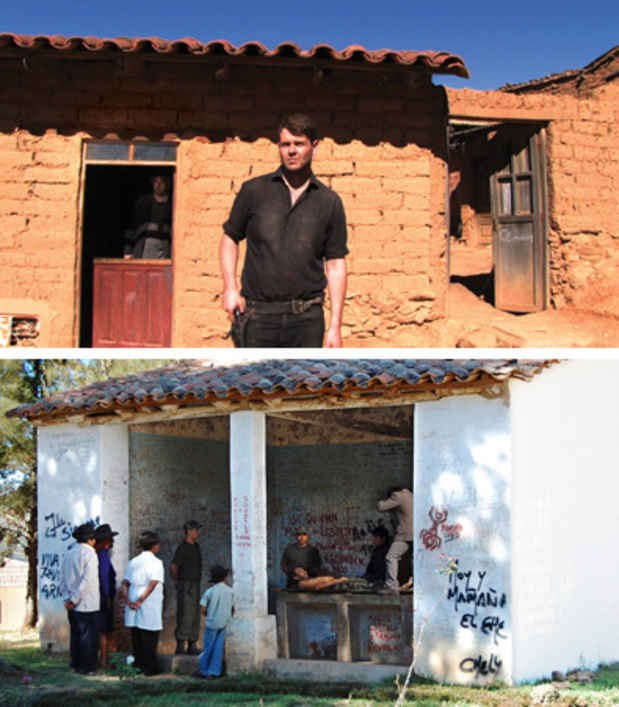Claudia Joskowicz "Round and Round and Consumed by Fire"
Thierry Goldberg

This event has ended.
In this show, two of the artist’s videos recreate the events surrounding the deaths of famous figures in Bolivian history. Here Joskowicz examines the lapses and ambiguities apparent in the mytho-historical narratives that have been reproduced and popularized by the media. What results are de-contextualized visual re-enactments, provocative and indeterminate.
Both videos are stripped down and evocative, at once natural-like in their simplicity, and hyperrealist in their lack of pretension. So little movement is there in these scenes that at times they seem little more than representations of photographic images. In the first video entitled Round and Round and Consumed by Fire, which consists of a single tracking shot circling around a street where Butch Cassidy and the Sundance Kid are in confrontation with the Bolivian army, the slow pace of the camera endows whatever is filmed with a certain ominous quality, be it a rock or a donkey tied to a bench. Having diluted the components of the story as to make it barely recognizable, the camera, moreover, fails to privilege any one clue. And so, confronted with a scene denuded of drama, almost devoid of narrative, the viewer is left to fill in the blanks of a re-enactment that can only be called inconclusive. Not even the plodding, minimalist music, whose emotional register is hard to decipher, offers much guidance. If there is any action at all, it is in the camera’s movement itself, symbolizing the shifts in the viewer’s perspective, however slight or fleeting they may be, as the images unfold. Thus, while the shot visually comes full circle, returning to the spot where the scene began, the narrative is unresolved, rife with possible readings, alternately alienating and compelling.
In Vallegrande, 1967, set to the same score as its counterpart, the camera zooms past onlookers in a field, towards a graffiti covered building where the corpse of Che Guevara is displayed. Sprawled out on a concrete slab in a decrepit laundry room with an arm falling out to the side, the body seems reminiscent of a depiction of Christ. The scene, shot in the actual location in which the revolutionary was laid after being killed and modeled after the original media photographs, recreates the moment in which the media went to capture images of the defeated hero to expose his demise. In this sense, when viewers watch the video, they witness a narrative in the making, a meta-narrative of sorts, an image about images, a story about stories. As the video shows myth and propaganda being constructed in real-time, it is as if the scene were holding up a mirror to the viewers, begging the question: “what is it to view an image, or a series of images?” Nevertheless, as with "Round and Round and Consumed by Fire," the reproduction of the historical moment on video is in many ways estranged from the original event. With a feeling of expectation and suspense evoked by the camera's slow tracking-in, the scene is elusive and inconclusive, rife with a kind of sinister mystery. Viewers, simultaneously drawn in and excluded, are left unsure as to what signifiers, if any, are left. In this way, both videos make events, whose elements have been inherited like faded hand-me-downs, here-to-fore fixed in the popular imagination, more malleable, elusive, and strange. Recounting becomes a playful act, one in which the image is deconstructed in order to be reconstructed, and visa versa, round and round again.
Media
Schedule
from September 12, 2010 to October 10, 2010
Opening Reception on 2010-09-12 from 17:00 to 19:00